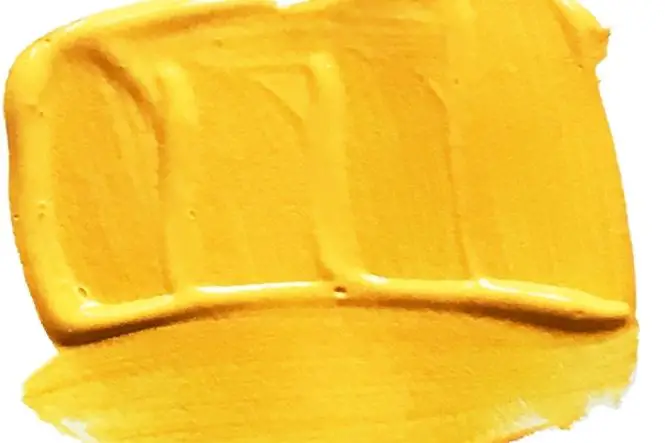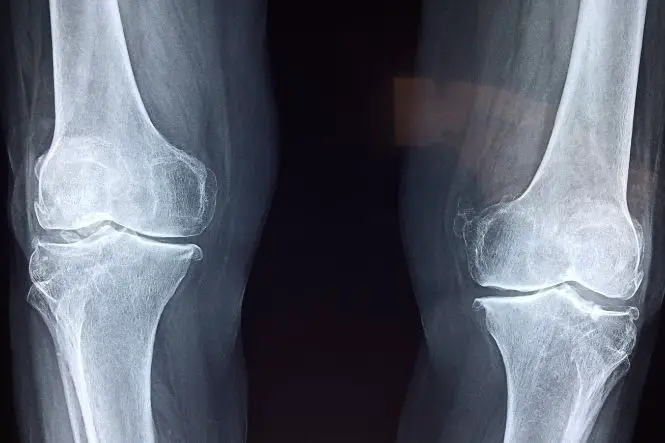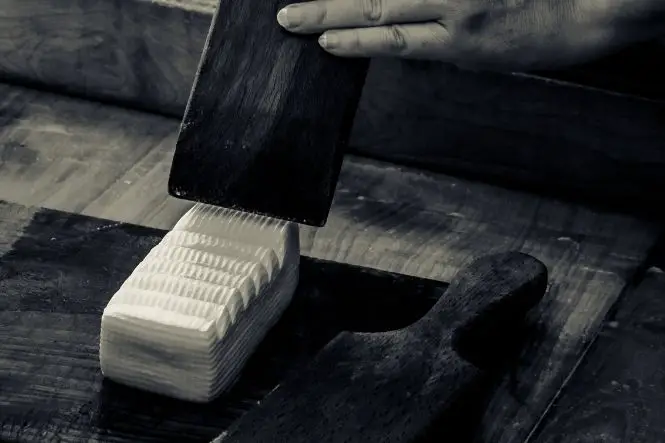Oil and water are described as immiscible liquids – liquids that do stay mixed together (see ‘Why Oil and Water Don’t Mix’). Even if oil and water are thoroughly shaken up, or whisked together, they will always separate out.
An emulsion is a stable mixture of oil and water that does not separate. Many foods and things around the house, for example hand creams or mayonnaise, are emulsions. The oil and water are kept together in an emulsion by compounds called emulsifiers.
Table of Contents
What is an Emulsifier?
Emulsifiers are molecules that have two different ends, one that likes water (hydrophilic), and the other that dislikes water and likes oil (hydrophobic). The hydrophobic end buries itself in the oil, and the hydrophilic end tries to get as far away from the oil as possible. This forms oil droplets in water surrounded by emulsifier molecules (oil-in-water emulsion) or water droplets in oil surrounded by emulsifier molecules (oil-in-water emulsion).
Soaps and Detergents as Emulsifiers
Soaps and detergents are well known emulsifiers. Put some water into a bottle and pour in a little oil. Add in a bit of washing up liquid and shake it up again – the oil will disperse through the water and not separate out. Try it again with laundry liquid or powder, dishwasher liquid or powder, or soap. Which is better at emulsifying the oil?
Egg Yolk as an Emulsifier
Mayonnaise is a mixture of oil and vinegar or lemon juice, with lecithin from egg yolks as an emulsifier. The mustard also acts as an emulsifier, as well as adding flavour. Making mayonnaise is not easy, as the oil has to be added very slowly, but is worth a try, and tastes wonderful (and is science too).
Whisk the yolks from two large eggs (preferably free range). Add one to two teaspoons of mustard, or one heaped teaspoon of mustard powder and whisk together, using a hand whisk or an electric whisk (an electric one is less hard work!)
Measure out 275 ml of vegetable oil (olive oil will give it a good flavour), add just a drop of oil to the egg yolks, and whisk thoroughly. Carry on adding the oil, drop-by-drop, whisking very thoroughly between each drop of oil. After adding about a quarter of the oil, the mayonnaise should start to get thick. Once this has happened, you can add the oil a bit more quickly, but not too fast – a very thin, very slow stream is best.
After about half the oil is in, add a tablespoon of white wine vinegar and whisk it in thoroughly. Carry on adding the rest of the oil slowly. If the mayonnaise is too thick, whisk in one or two tablespoons of boiling water. Keep in the fridge and use within a week. This contains raw eggs – anyone who is very young, elderly, pregnant or unwell should avoid eating raw eggs.
The lecithin in egg yolks also acts as an emulsifier in homemade ice cream (see ‘Ice Cream: Colloidal Chemistry’). Soya beans, egg yolks and legume seeds (peas, beans, lentils and peanuts) also contain lecithin.
Borax as an Emulsifier
Many creams and lotions are made of oils and water, and use an emulsifier to help the two to mix.
Make a simple hand cream by melting together five tablespoons of olive oil and three tablespoons of beeswax over a very low heat. Mix well. Add a teaspoon of water and a pinch of borax and mix well. Add a drop or two of fragrance oil to make it smell good. The borax acts as an emulsifier. Try making the hand cream without the borax – does the water still mix in properly?
Beeswax also has some effect as an emulsifier, and the Greek physician Galen (born in 131 AD) used it in skin lotion.






